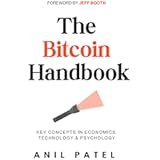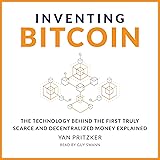The cryptocurrency market, particularly Bitcoin, has been a rollercoaster for many investors over the past year. While new all-time highs like $126,000 might suggest a roaring bull market, the feeling for many seasoned participants is often one of confusion or even frustration. As highlighted in the accompanying video, the traditional narrative of retail-driven pumps seems to be increasingly overshadowed by a more calculated, institutional approach to the market. Understanding this shift, and the pervasive **Bitcoin market manipulation** that often accompanies it, is crucial for navigating the current landscape.
This evolving market structure isn’t about shady, backroom deals in the traditional sense. Instead, it appears to be a sophisticated system of structural accumulation, often operating within regulatory frameworks. For too long, the crypto community has been told what to expect, only to see the market move in the opposite direction, leaving individual investors feeling left behind. This article will delve deeper into these mechanisms, expanding on the insights shared in the video to help uncover the hidden forces shaping the crypto bull run.
The Recurring Manipulation Cycle: Whispers and Pumps
One of the most frustrating aspects for retail investors is the constant cycle of fear-mongering followed by unexpected pumps. The video vividly describes how narratives are often crafted to influence sentiment, leading many to sell off their assets prematurely. A prime example was the “September is bearish” narrative, heavily circulated across financial media and social platforms. This widespread belief led many individual investors to liquidate positions, anticipating a market downturn that ultimately did not materialize.
The reality was quite different; September concluded with a bullish performance for Bitcoin, and even Ethereum showed resilience. While retail investors were cashing out, larger entities, often referred to as “whales,” were accumulating assets at significant levels. This pattern is not new, but its execution is becoming increasingly refined, creating a deliberate disconnect between public perception and actual market activity. Such tactics reveal a deliberate orchestration designed to profit from the emotional reactions of the masses.
Unpacking the September Playbook and Institutional Inflows
The “September is bearish” narrative was heavily fueled by headlines reporting substantial outflows from spot ETFs. For instance, in the first week of September, over $750 million reportedly hemorrhaged from these crypto investment vehicles, sparking widespread panic. However, this fear was quickly inverted by subsequent institutional moves. Just weeks later, in the first week of October, a staggering $5.95 billion flowed into crypto investment products, marking one of the largest weekly inflows on record.
This dramatic reversal highlights a clear pattern of institutional maneuvering, demonstrating how initial outflows can be a strategic setup for subsequent accumulation. When the “September is bearish” narrative gripped the market, institutional players were busy buying up assets at discounted prices. This strategic accumulation, hidden behind the guise of market uncertainty, allowed them to position themselves for the subsequent mega pump to new all-time highs. This calculated approach exemplifies modern **crypto market manipulation** and its often subtle forms.
Bitcoin ETFs: A New Weapon in the Manipulation Arsenal
The introduction of Bitcoin Spot ETFs has fundamentally altered the mechanics of the crypto market. While initially hailed as a sign of mainstream adoption and legitimacy, the video argues they have become a powerful tool for institutional manipulation. The mechanism is deceptively simple yet incredibly effective: for every share of a Bitcoin ETF an investor buys, the issuer (like BlackRock) is legally mandated to purchase an equivalent amount of real Bitcoin on the open market to back it.
This creates a relentless, automated demand for Bitcoin, independent of retail sentiment. This regulated pathway allows institutions to exert immense influence over the supply dynamics. Consider the stark contrast in numbers: after the halving event, Bitcoin miners produce approximately 450 new Bitcoins per day. Yet, on peak days, these ETFs are observed vacuuming up over 9,000 Bitcoins daily, a figure that is 20 times the daily miner production. This isn’t mere hype; it’s an engineered scarcity, giving these institutions unprecedented control over price discovery.
Engineered Scarcity and the Supply-Demand Imbalance
The sheer scale of institutional Bitcoin acquisition through ETFs creates an unprecedented supply-demand imbalance. When institutions acquire 20 times the daily new supply, the available Bitcoin on exchanges diminishes rapidly, driving up the price. This mechanism bypasses traditional market sentiment, making the market less responsive to individual investor activity and more susceptible to institutional accumulation strategies. It transforms Bitcoin from a decentralized, grassroots asset into a regulated financial product, controlled by the very institutions that once dismissed it.
This shift means that the market no longer operates solely on collective enthusiasm or technological innovation but increasingly on the strategic buying power of a few large entities. The ongoing whispers of a market top or impending recession, even as these institutions continue to buy massive amounts of Bitcoin, become part of this broader strategy. It encourages retail investors to sell, allowing institutions to further their accumulation objectives at lower prices before the next major upward move.
The Missing Piece: Where Did Retail Go?
For those who remember the frenetic bull runs of 2017 and 2021, the current market environment feels distinctly different. The palpable excitement and widespread public engagement seem absent. In 2017, retail investor mania was the primary driver of price action. By 2021, a combination of retail and burgeoning institutional interest fueled the parabolic run. However, the current landscape of 2025 sees retail participation significantly diminished.
A reliable indicator of retail engagement is the ranking of the Coinbase App in app stores. As the most retail-friendly exchange, its high ranking historically correlates with peak interest. Currently, Coinbase is reportedly ranked around 260th, indicating a widespread lack of retail interest. This sentiment is further echoed by Google search trends for “how to buy crypto,” which are less than half of their 2021 peaks and significantly lower than 2017 levels. Even YouTube views for crypto content, outside of a few dedicated channels, have seen a substantial decline.
The “Exit Liquidity” Theory and Retail’s Role
The video poses an intriguing theory for this absence: manipulators don’t want retail investors in the market just yet. Retail investors traditionally serve as “exit liquidity,” meaning their late-stage buying provides the capital for institutions to offload their holdings at the market’s peak. Until institutions are ready to distribute their accumulated assets, there’s little incentive for them to attract widespread retail participation.
This theory suggests that the market will only truly become appealing to the masses when institutions are prepared to initiate the final phase of the bull run. This strategy leverages human psychology, as retail investors are often drawn in by significant price increases, creating a perfect environment for institutional distribution. The slow burn and lack of widespread hype are by design, allowing whales to continue accumulating without triggering early FOMO from the general public.
What Will Bring Retail Back to the Casino?
If institutions are indeed waiting for the right moment to re-engage retail, what levers might they pull? Historically, Ethereum has served as a critical bridge, facilitating the capital rotation from the relative safety of Bitcoin into altcoin speculation. An “altcoin season” typically doesn’t commence without a significant influx of capital into ETH, often accompanied by a decline in Bitcoin dominance.
The video suggests that Ethereum breaking, closing, and holding above the psychological $5,000 level could be a key trigger for broader retail interest. This major milestone, coupled with lower interest rates injecting more liquidity into the financial system, would create an environment ripe for renewed speculation. The availability of “cheap money” often translates into increased risk appetite, drawing individuals back into volatile assets like cryptocurrencies.
The Catalysts for Renewed Market Excitement
Beyond ETH’s performance, several factors are aligning to potentially reignite retail interest. Firstly, central banks, like the Fed, have begun cutting interest rates, signaling more cuts to come. This environment of increasing liquidity makes speculative assets more attractive. Secondly, the ETF machine is fully operational, with the SEC streamlining the approval process for even more crypto-related ETFs. This creates a pipeline for continuous institutional demand and mainstream exposure.
Thirdly, Q4 is a period when large funds rebalance their portfolios, and Bitcoin has now become a legitimate, allocable asset. This ensures ongoing institutional investment regardless of immediate market sentiment. Most importantly, retail investors still exhibit significant disbelief, remaining largely on the sidelines. This lack of broad participation is precisely what allows the institutions to continue their accumulation phase, setting the stage for a future surge that will eventually capture public imagination. This dynamic underscores the ongoing **Bitcoin market manipulation** at play.
The New Bull Market: Control Over Hype
The current market environment represents a fundamental shift in how crypto bull runs operate. It’s less about grassroots rebellion and more about institutional control. The same Wall Street giants that once derided Bitcoin as “rat poison” now own significant portions of it, pumping it for their clients and balance sheets. This isn’t the bull market many experienced in 2017 or 2021, where every altcoin seemed to skyrocket and social media was awash with crypto enthusiasm.
The bull market is here, but it feels different because the game has been altered. Bitcoin might indeed reach $200,000 or higher, yet a significant portion of retail investors might still miss out or fail to profit substantially. This is because the market is no longer driven by collective hype but by calculated strategies. The antidote to feeling fooled by this new paradigm of **crypto market manipulation** is simple: “watch what they do, ignore what they say.” Stay calm, filter out the noise, and observe the institutional flow of capital, which often speaks louder than any market rumor.







